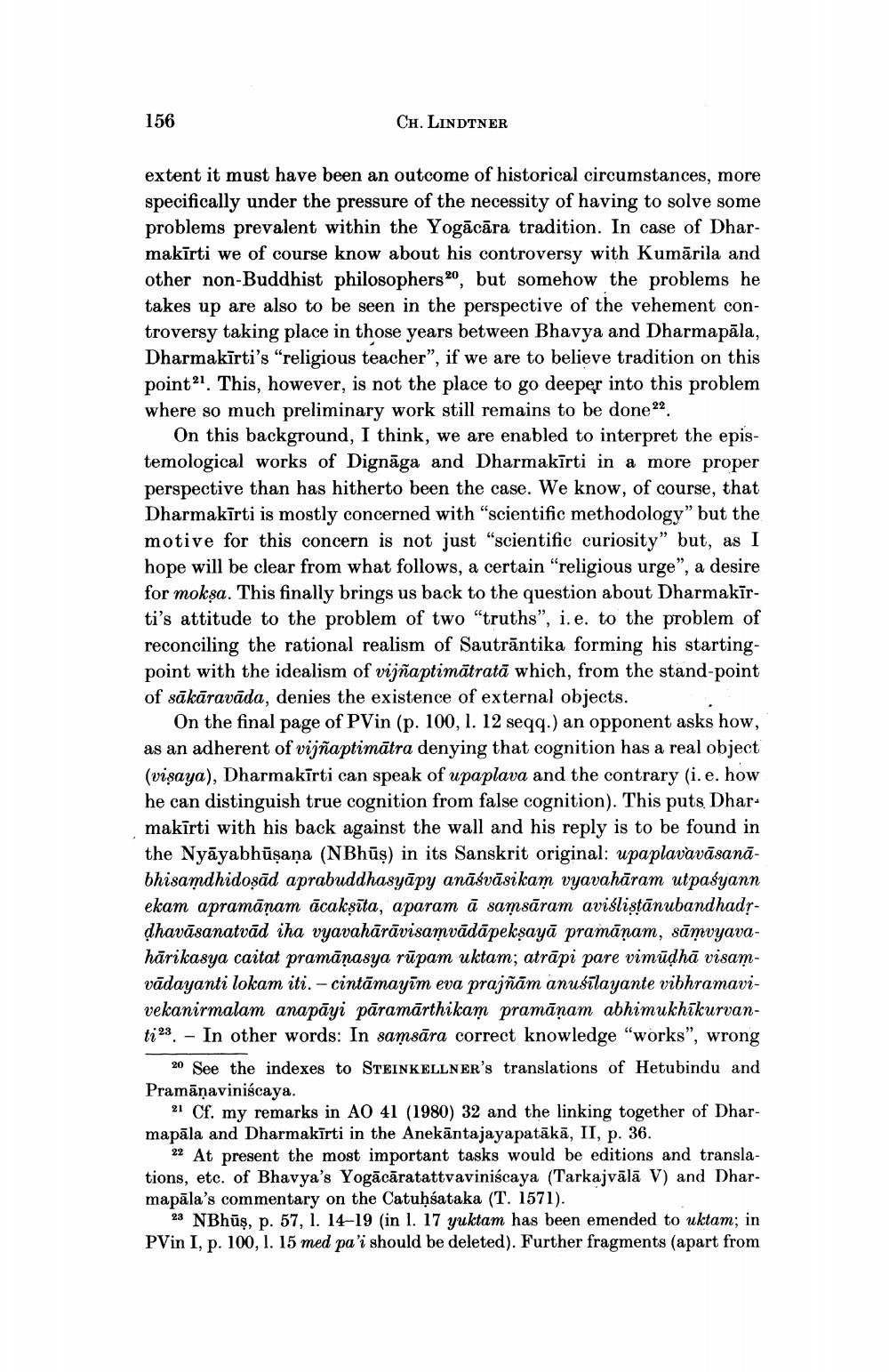Book Title: Marginalia To Dharmakirtis Pramanaviniscaya I II Author(s): Christian Lindtner Publisher: Christian Lindtner View full book textPage 8
________________ 156 CH. LINDTNER extent it must have been an outcome of historical circumstances, more specifically under the pressure of the necessity of having to solve some problems prevalent within the Yogācāra tradition. In case of Dharmakīrti we of course know about his controversy with Kumārila and other non-Buddhist philosophers 20, but somehow the problems he takes up are also to be seen in the perspective of the vehement controversy taking place in those years between Bhavya and Dharmapāla, Dharmakīrti's "religious teacher”, if we are to believe tradition on this point21. This, however, is not the place to go deeper into this problem where so much preliminary work still remains to be done 22 On this background, I think, we are enabled to interpret the epistemological works of Dignāga and Dharmakīrti in a more proper perspective than has hitherto been the case. We know, of course, that Dharmakīrti is mostly concerned with "scientific methodology" but the motive for this concern is not just "scientific curiosity" but, as I hope will be clear from what follows, a certain "religious urge”, a desire for moksa. This finally brings us back to the question about Dharmakīrti's attitude to the problem of two "truths", i.e. to the problem of reconciling the rational realism of Sautrāntika forming his startingpoint with the idealism of vijñaptimātratā which, from the stand-point of sākāravāda, denies the existence of external objects. On the final page of PVin (p. 100, 1. 12 seqq.) an opponent asks how, as an adherent of vijñaptimātra denying that cognition has a real object (visaya), Dharmakīrti can speak of upaplava and the contrary (i.e. how he can distinguish true cognition from false cognition). This puts Dharmakīrti with his back against the wall and his reply is to be found in the Nyāyabhūşaņa (NBhūş) in its Sanskrit original: upaplavavāsanābhisamdhidosād aprabuddhasyāpy anāśvāsikam vyavahāram utpaśyann ekam apramānam ācaksīta, aparam ā samsāram avislistānubandhadrdhavāsanatvād iha vyavahārāvisamvādāpeksayā pramānam, sāmvyavahāri kasya caitat pramāṇasya rūpam uktam; atrāpi pare vimūdhā visamvādayanti lokam iti. - cintāmayım eva prajñām anuśīlayante vibhramavivekanirmalam ana pāyi pāramārthikam pramānam abhimukhīkurvanti 23. - In other words: In samsāra correct knowledge "works", wrong 20 See the indexes to STEINKELLNER's translations of Hetubindu and Pramāņaviniscaya. 21 Cf, my remarks in AO 41 (1980) 32 and the linking together of Dharmapāla and Dharmakīrti in the Anekāntajayapatākā, II, p. 36. 22 At present the most important tasks would be editions and translations, etc. of Bhavya's Yogācāratattvaviniscaya (Tarkajvālā V) and Dharmapāla's commentary on the Catuhsataka (T. 1571). 23 NBhūş, p. 57, 1. 14-19 (in l. 17 yuktam has been emended to uktam; in PVin I, p. 100, 1. 15 med pa'i should be deleted). Further fragments (apart fromPage Navigation
1 ... 6 7 8 9 10 11 12 13 14 15 16 17 18 19 20 21 22 23 24 25 26 27
